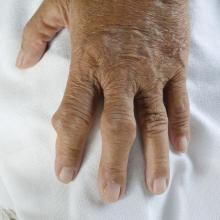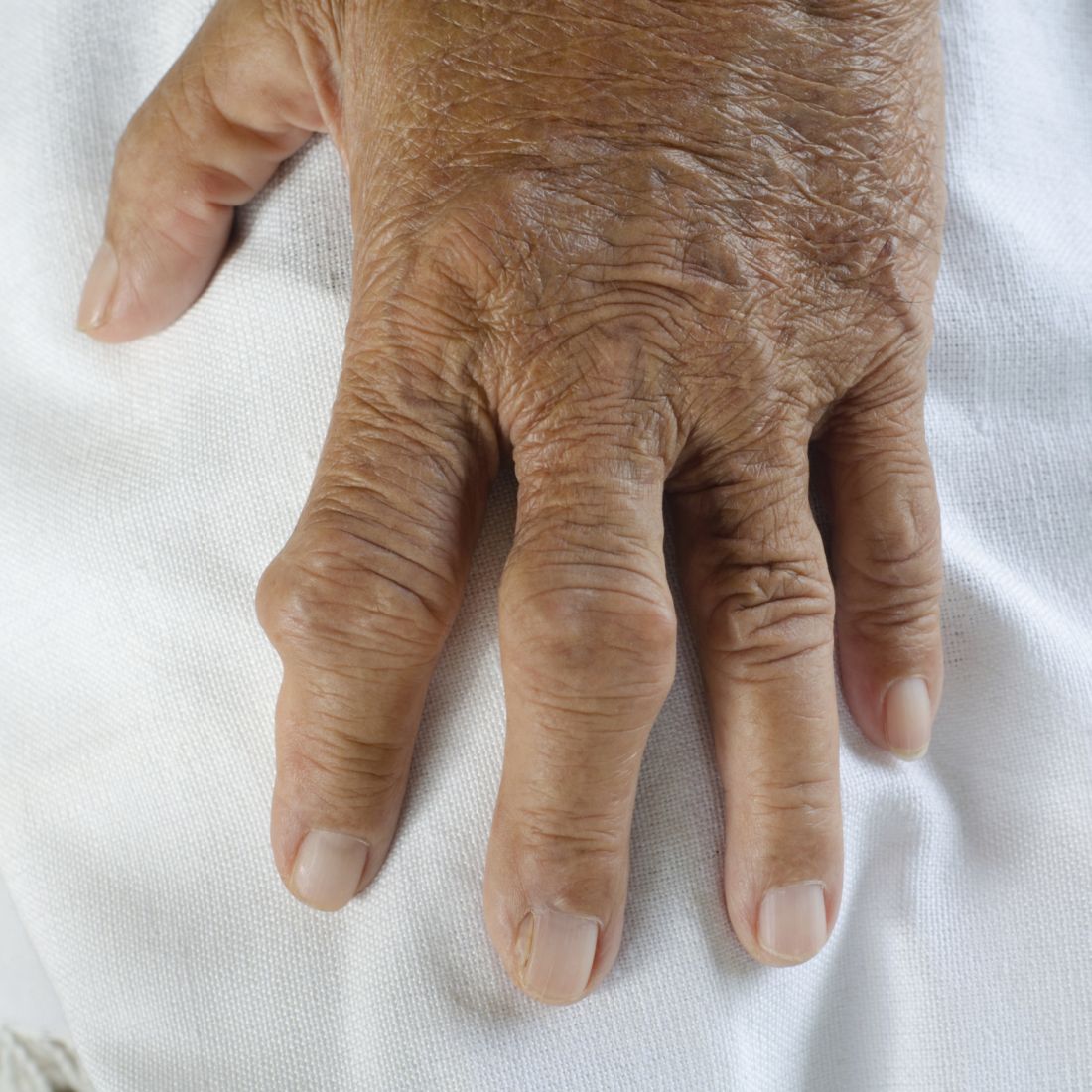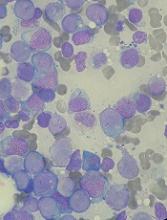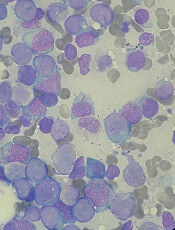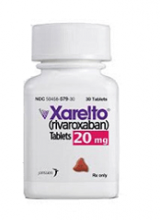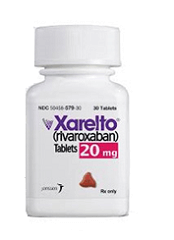User login
Walking the halls of power
Hospital medicine may be a young specialty, but it is already playing a significant role in both front-line patient care and, increasingly, in shaping public policy. Case in point: Two hospitalists serving currently in key roles in the federal government, and two former top civil servants, each of whom are examples of the growing influence of the hospitalist perspective.
“The hospitalist viewpoint of the health care system is a unique one, and it lends itself very well to the challenges of our current delivery system reform. We’re reforming the health care system to deliver care more cost effectively,” said Ron Greeno, MD, FCCP, MHM, SHM president and chair of the SHM Public Policy committee. “Hospitalists are trained to do that – they go to work every day to do that.”
Leading the FDA
“He’s the perfect person for that job and is looking to shake things up,” Dr. Greeno said. “There are a lot of things that can improve in terms of how drugs get to market, including lower cost generic drugs.” That’s an issue Dr. Gottlieb has been championing for years, and his understanding of the issue also makes him well prepared to take this position now, Dr. Greeno said.
“Dr. Gottlieb’s nomination comes at a momentous time for the agency, which Mr. Trump has promised to significantly remake,” the New York Times wrote on March 29, prior to his confirmation. “The next commissioner will be charged with putting into practice a far-reaching law, passed in December, aimed at bringing drugs to market more quickly.”
In addition to his work at the AEI, Dr. Gottlieb served on SHM’s Public Policy committee. He was a clinical assistant professor at New York University School of Medicine and advised the U.S. Department of Health and Human Services as a member of the Federal Health IT Policy committee.
Steering national quality programs
Kate Goodrich’s preparation for her government role included experience with several sides of the health care system: Dr. Goodrich, MD, MHS, was the director of the Division of Hospital Medicine at George Washington University Hospital, one of the first hospitalist programs in the Washington area. She worked at an inpatient rehab facility and has practiced in ambulatory care.
Now, as chief medical officer of CMS and director of the Center for Clinical Standards and Quality (CCSQ), she’s helping drive those policy decisions, overseeing multiple quality measurement and value-based purchasing programs and health and safety standards for hospitals.
Dr. Goodrich still makes rounds at George Washington Hospital on weekends. “It allows me to have a sort of in-your-bones understanding of the challenges of frontline providers,” she said. “I’m able to understand the clinician point of view in our policy decisions.” She’s also able to see first-hand the effects of those policy decisions on clinicians, patients, and health care systems.
As physician leaders within their organizations, hospitalists fit naturally into other leadership positions, she said. “Hospitalists often take leadership roles around quality of care and efficiency and flow and those sorts of thing,” Dr. Goodrich said. “I think it is a very natural progression for hospitalists to get interested in health care and medicine from that viewpoint, which then might allow them to make a leap into another type of field.”
An innovator at CMS
Until very recently, pediatric hospitalist Patrick Conway, MD, FAAP, MHM, served as deputy administrator for Innovation and Quality at the Centers for Medicare & Medicaid Services and director of the Center for Medicare and Medicaid Innovation. On Oct. 1, he took on a new challenge, becoming president and CEO of Blue Cross and Blue Shield of North Carolina (Blue Cross NC).
Dr. Conway was selected as a Master of Hospital Medicine by SHM, and received the HHS Secretary’s Award for Distinguished Service, the Secretary’s highest distinction for excellence. The Patient Safety Movement Foundation gave him their Humanitarian Award, and in February 2017, he received the AMA’s Dr. Nathan Davis Award for Outstanding Government Service. He also was elected to the Health and Medicine Division of the National Academies of Sciences, Engineering, and Medicine in 2014.
Prior to joining CMS, Dr. Conway oversaw clinical operations and research at Cincinnati Children’s Hospital Medical Center as director of hospital medicine, with a focus on improving patient outcomes across the health system.
Improving the country’s health
Obesity, tobacco-related disease, mental illness, and addiction are some of the issues Vivek H. Murthy, MD, MBA, targeted while serving as the 19th U.S. Surgeon General. He was appointed to the position by President Obama in 2014, and was relieved of his duties by President Trump in April 2017.
Dr. Murthy has said that addiction should be seen as a chronic illness, not a character flaw, and last year sent a letter to 2.3 million health care providers nationwide, encouraging them to join a national effort to reform prescribing practices.
According to Dr. Greeno, each of these hospitalists illuminates new paths for others in the field. “I think for young people who are trying to identify what career path they want to pursue, this is something that can’t be anything but good for our specialty – and good for the health system,” he said. “Hospitalists have the perfect clinical background and mindset to help our health care system get to where it needs to go. It’s a huge challenge. It’s going to be a ton of work, and the stakes are very, very high.”
Reference
1. Thomas K. F.D.A. Nominee, Paid Millions by Industry, Says He’ll Recuse Himself if Needed. New York Times. March 29, 2017. https://www.nytimes.com/2017/03/29/health/fda-nominee-scott-gottlieb-recuse-conflicts.html?_r=0. Accessed March 31, 2017.
Hospital medicine may be a young specialty, but it is already playing a significant role in both front-line patient care and, increasingly, in shaping public policy. Case in point: Two hospitalists serving currently in key roles in the federal government, and two former top civil servants, each of whom are examples of the growing influence of the hospitalist perspective.
“The hospitalist viewpoint of the health care system is a unique one, and it lends itself very well to the challenges of our current delivery system reform. We’re reforming the health care system to deliver care more cost effectively,” said Ron Greeno, MD, FCCP, MHM, SHM president and chair of the SHM Public Policy committee. “Hospitalists are trained to do that – they go to work every day to do that.”
Leading the FDA
“He’s the perfect person for that job and is looking to shake things up,” Dr. Greeno said. “There are a lot of things that can improve in terms of how drugs get to market, including lower cost generic drugs.” That’s an issue Dr. Gottlieb has been championing for years, and his understanding of the issue also makes him well prepared to take this position now, Dr. Greeno said.
“Dr. Gottlieb’s nomination comes at a momentous time for the agency, which Mr. Trump has promised to significantly remake,” the New York Times wrote on March 29, prior to his confirmation. “The next commissioner will be charged with putting into practice a far-reaching law, passed in December, aimed at bringing drugs to market more quickly.”
In addition to his work at the AEI, Dr. Gottlieb served on SHM’s Public Policy committee. He was a clinical assistant professor at New York University School of Medicine and advised the U.S. Department of Health and Human Services as a member of the Federal Health IT Policy committee.
Steering national quality programs
Kate Goodrich’s preparation for her government role included experience with several sides of the health care system: Dr. Goodrich, MD, MHS, was the director of the Division of Hospital Medicine at George Washington University Hospital, one of the first hospitalist programs in the Washington area. She worked at an inpatient rehab facility and has practiced in ambulatory care.
Now, as chief medical officer of CMS and director of the Center for Clinical Standards and Quality (CCSQ), she’s helping drive those policy decisions, overseeing multiple quality measurement and value-based purchasing programs and health and safety standards for hospitals.
Dr. Goodrich still makes rounds at George Washington Hospital on weekends. “It allows me to have a sort of in-your-bones understanding of the challenges of frontline providers,” she said. “I’m able to understand the clinician point of view in our policy decisions.” She’s also able to see first-hand the effects of those policy decisions on clinicians, patients, and health care systems.
As physician leaders within their organizations, hospitalists fit naturally into other leadership positions, she said. “Hospitalists often take leadership roles around quality of care and efficiency and flow and those sorts of thing,” Dr. Goodrich said. “I think it is a very natural progression for hospitalists to get interested in health care and medicine from that viewpoint, which then might allow them to make a leap into another type of field.”
An innovator at CMS
Until very recently, pediatric hospitalist Patrick Conway, MD, FAAP, MHM, served as deputy administrator for Innovation and Quality at the Centers for Medicare & Medicaid Services and director of the Center for Medicare and Medicaid Innovation. On Oct. 1, he took on a new challenge, becoming president and CEO of Blue Cross and Blue Shield of North Carolina (Blue Cross NC).
Dr. Conway was selected as a Master of Hospital Medicine by SHM, and received the HHS Secretary’s Award for Distinguished Service, the Secretary’s highest distinction for excellence. The Patient Safety Movement Foundation gave him their Humanitarian Award, and in February 2017, he received the AMA’s Dr. Nathan Davis Award for Outstanding Government Service. He also was elected to the Health and Medicine Division of the National Academies of Sciences, Engineering, and Medicine in 2014.
Prior to joining CMS, Dr. Conway oversaw clinical operations and research at Cincinnati Children’s Hospital Medical Center as director of hospital medicine, with a focus on improving patient outcomes across the health system.
Improving the country’s health
Obesity, tobacco-related disease, mental illness, and addiction are some of the issues Vivek H. Murthy, MD, MBA, targeted while serving as the 19th U.S. Surgeon General. He was appointed to the position by President Obama in 2014, and was relieved of his duties by President Trump in April 2017.
Dr. Murthy has said that addiction should be seen as a chronic illness, not a character flaw, and last year sent a letter to 2.3 million health care providers nationwide, encouraging them to join a national effort to reform prescribing practices.
According to Dr. Greeno, each of these hospitalists illuminates new paths for others in the field. “I think for young people who are trying to identify what career path they want to pursue, this is something that can’t be anything but good for our specialty – and good for the health system,” he said. “Hospitalists have the perfect clinical background and mindset to help our health care system get to where it needs to go. It’s a huge challenge. It’s going to be a ton of work, and the stakes are very, very high.”
Reference
1. Thomas K. F.D.A. Nominee, Paid Millions by Industry, Says He’ll Recuse Himself if Needed. New York Times. March 29, 2017. https://www.nytimes.com/2017/03/29/health/fda-nominee-scott-gottlieb-recuse-conflicts.html?_r=0. Accessed March 31, 2017.
Hospital medicine may be a young specialty, but it is already playing a significant role in both front-line patient care and, increasingly, in shaping public policy. Case in point: Two hospitalists serving currently in key roles in the federal government, and two former top civil servants, each of whom are examples of the growing influence of the hospitalist perspective.
“The hospitalist viewpoint of the health care system is a unique one, and it lends itself very well to the challenges of our current delivery system reform. We’re reforming the health care system to deliver care more cost effectively,” said Ron Greeno, MD, FCCP, MHM, SHM president and chair of the SHM Public Policy committee. “Hospitalists are trained to do that – they go to work every day to do that.”
Leading the FDA
“He’s the perfect person for that job and is looking to shake things up,” Dr. Greeno said. “There are a lot of things that can improve in terms of how drugs get to market, including lower cost generic drugs.” That’s an issue Dr. Gottlieb has been championing for years, and his understanding of the issue also makes him well prepared to take this position now, Dr. Greeno said.
“Dr. Gottlieb’s nomination comes at a momentous time for the agency, which Mr. Trump has promised to significantly remake,” the New York Times wrote on March 29, prior to his confirmation. “The next commissioner will be charged with putting into practice a far-reaching law, passed in December, aimed at bringing drugs to market more quickly.”
In addition to his work at the AEI, Dr. Gottlieb served on SHM’s Public Policy committee. He was a clinical assistant professor at New York University School of Medicine and advised the U.S. Department of Health and Human Services as a member of the Federal Health IT Policy committee.
Steering national quality programs
Kate Goodrich’s preparation for her government role included experience with several sides of the health care system: Dr. Goodrich, MD, MHS, was the director of the Division of Hospital Medicine at George Washington University Hospital, one of the first hospitalist programs in the Washington area. She worked at an inpatient rehab facility and has practiced in ambulatory care.
Now, as chief medical officer of CMS and director of the Center for Clinical Standards and Quality (CCSQ), she’s helping drive those policy decisions, overseeing multiple quality measurement and value-based purchasing programs and health and safety standards for hospitals.
Dr. Goodrich still makes rounds at George Washington Hospital on weekends. “It allows me to have a sort of in-your-bones understanding of the challenges of frontline providers,” she said. “I’m able to understand the clinician point of view in our policy decisions.” She’s also able to see first-hand the effects of those policy decisions on clinicians, patients, and health care systems.
As physician leaders within their organizations, hospitalists fit naturally into other leadership positions, she said. “Hospitalists often take leadership roles around quality of care and efficiency and flow and those sorts of thing,” Dr. Goodrich said. “I think it is a very natural progression for hospitalists to get interested in health care and medicine from that viewpoint, which then might allow them to make a leap into another type of field.”
An innovator at CMS
Until very recently, pediatric hospitalist Patrick Conway, MD, FAAP, MHM, served as deputy administrator for Innovation and Quality at the Centers for Medicare & Medicaid Services and director of the Center for Medicare and Medicaid Innovation. On Oct. 1, he took on a new challenge, becoming president and CEO of Blue Cross and Blue Shield of North Carolina (Blue Cross NC).
Dr. Conway was selected as a Master of Hospital Medicine by SHM, and received the HHS Secretary’s Award for Distinguished Service, the Secretary’s highest distinction for excellence. The Patient Safety Movement Foundation gave him their Humanitarian Award, and in February 2017, he received the AMA’s Dr. Nathan Davis Award for Outstanding Government Service. He also was elected to the Health and Medicine Division of the National Academies of Sciences, Engineering, and Medicine in 2014.
Prior to joining CMS, Dr. Conway oversaw clinical operations and research at Cincinnati Children’s Hospital Medical Center as director of hospital medicine, with a focus on improving patient outcomes across the health system.
Improving the country’s health
Obesity, tobacco-related disease, mental illness, and addiction are some of the issues Vivek H. Murthy, MD, MBA, targeted while serving as the 19th U.S. Surgeon General. He was appointed to the position by President Obama in 2014, and was relieved of his duties by President Trump in April 2017.
Dr. Murthy has said that addiction should be seen as a chronic illness, not a character flaw, and last year sent a letter to 2.3 million health care providers nationwide, encouraging them to join a national effort to reform prescribing practices.
According to Dr. Greeno, each of these hospitalists illuminates new paths for others in the field. “I think for young people who are trying to identify what career path they want to pursue, this is something that can’t be anything but good for our specialty – and good for the health system,” he said. “Hospitalists have the perfect clinical background and mindset to help our health care system get to where it needs to go. It’s a huge challenge. It’s going to be a ton of work, and the stakes are very, very high.”
Reference
1. Thomas K. F.D.A. Nominee, Paid Millions by Industry, Says He’ll Recuse Himself if Needed. New York Times. March 29, 2017. https://www.nytimes.com/2017/03/29/health/fda-nominee-scott-gottlieb-recuse-conflicts.html?_r=0. Accessed March 31, 2017.
Febuxostat prevents early gout flares
The urate-lowering therapy febuxostat reduced the number of disease flares that people with early gout experienced relative to placebo in a double-blind, placebo-controlled study.
Febuxostat (Uloric) produced a 12.1% reduction in the overall percentage of patients who experienced at least one gout flare in comparison to placebo (29.3% vs. 41.4%; P less than .05).
Treatment with febuxostat also significantly improved control of serum uric acid, compared with the placebo-treated patients (64.3% vs. 5.7%; P less than .001), as well as synovitis as measured via the rheumatoid arthritis magnetic resonance imaging score (RAMRIS) score (–0.43 vs. –0.07; P less than .001).
“This study indicates that even for people who have only had one or two prior gout flares, urate-lowering therapy to reduce serum urate below 6 mg/dL may have benefit in reduction future flares,” said Dr. Dalbeth of the University of Auckland (New Zealand).
Febuxostat is a xanthine oxidase inhibitor indicated for the chronic management of excess uric acid in the blood in people diagnosed with gout. It is not indicated for use in people who have high serum uric acid levels without a history of gout.
“Although acute self-limiting flares are the most common clinical presentation of gout, joint damage is a frequent complication of the disease,” Dr. Dalbeth and her associates wrote.
“Joint damage is typically a late feature of long-standing gout,” they added, but “longitudinal observational data have indicated that joint damage can occur in some patients with early disease.” Increased urate crystal deposition could be associated with bone erosions, they explained, and the primary aim of the study was to look the rate of bone erosions over the course of 2 years’ treatment.
However, despite this reasoning and some prior clinical evidence, the researchers found no noticeable differences between the study groups in terms of radiologic joint erosion. This was assessed over 2 years in a single-affected joint. The mean change from baseline to month 24 in modified Sharp-van der Heijde erosion scores was 0.01 for both febuxostat and placebo (P = .47).
This was a phase 2 study conducted in 56 centers in the United States that screened 798 subjects and enrolled 314 adults with early gout. For inclusion, patients had to have hyperuricemia, defined as a serum uric acid level of 7.0 mg/dL or higher, and they had to have experienced no more than two gout flares in the past year.
Patients were randomized to once-daily treatment with febuxostat or placebo, with those randomized to the active treatment started at a dose of 40 mg, which could be increased to 80 mg after 2 weeks if serum uric acid levels remained high, at 6.0 mg/dL or above.
“To our knowledge, this is the first randomized, controlled trial examining the effects of [urate-lowering therapy] in patients with early gout,” the authors observed.
Although the primary endpoint was not met, the study “provides important new information about the natural history of joint damage in subjects with gout,” they suggested. In contrast to other inflammatory joint diseases, such as rheumatoid arthritis, joint erosions on plain radiographs were “infrequently observed at baseline” and over the 2-year study period. The fact the there was a change in MRI synovitis suggests that perhaps there may be some underlying joint damage occurring, although the clinical significance of this is uncertain.
Takeda, which makes febuxostat, funded the study. Dr. Dalbeth has received consulting fees, speaker fees, or research grants from Takeda, CymaBay, Ardea Biosciences, AstraZeneca, and Horizon. A couple of her coauthors disclosed acting as consultants to or receiving research funding from Takeda, and three were current or past employees of the company.
The urate-lowering therapy febuxostat reduced the number of disease flares that people with early gout experienced relative to placebo in a double-blind, placebo-controlled study.
Febuxostat (Uloric) produced a 12.1% reduction in the overall percentage of patients who experienced at least one gout flare in comparison to placebo (29.3% vs. 41.4%; P less than .05).
Treatment with febuxostat also significantly improved control of serum uric acid, compared with the placebo-treated patients (64.3% vs. 5.7%; P less than .001), as well as synovitis as measured via the rheumatoid arthritis magnetic resonance imaging score (RAMRIS) score (–0.43 vs. –0.07; P less than .001).
“This study indicates that even for people who have only had one or two prior gout flares, urate-lowering therapy to reduce serum urate below 6 mg/dL may have benefit in reduction future flares,” said Dr. Dalbeth of the University of Auckland (New Zealand).
Febuxostat is a xanthine oxidase inhibitor indicated for the chronic management of excess uric acid in the blood in people diagnosed with gout. It is not indicated for use in people who have high serum uric acid levels without a history of gout.
“Although acute self-limiting flares are the most common clinical presentation of gout, joint damage is a frequent complication of the disease,” Dr. Dalbeth and her associates wrote.
“Joint damage is typically a late feature of long-standing gout,” they added, but “longitudinal observational data have indicated that joint damage can occur in some patients with early disease.” Increased urate crystal deposition could be associated with bone erosions, they explained, and the primary aim of the study was to look the rate of bone erosions over the course of 2 years’ treatment.
However, despite this reasoning and some prior clinical evidence, the researchers found no noticeable differences between the study groups in terms of radiologic joint erosion. This was assessed over 2 years in a single-affected joint. The mean change from baseline to month 24 in modified Sharp-van der Heijde erosion scores was 0.01 for both febuxostat and placebo (P = .47).
This was a phase 2 study conducted in 56 centers in the United States that screened 798 subjects and enrolled 314 adults with early gout. For inclusion, patients had to have hyperuricemia, defined as a serum uric acid level of 7.0 mg/dL or higher, and they had to have experienced no more than two gout flares in the past year.
Patients were randomized to once-daily treatment with febuxostat or placebo, with those randomized to the active treatment started at a dose of 40 mg, which could be increased to 80 mg after 2 weeks if serum uric acid levels remained high, at 6.0 mg/dL or above.
“To our knowledge, this is the first randomized, controlled trial examining the effects of [urate-lowering therapy] in patients with early gout,” the authors observed.
Although the primary endpoint was not met, the study “provides important new information about the natural history of joint damage in subjects with gout,” they suggested. In contrast to other inflammatory joint diseases, such as rheumatoid arthritis, joint erosions on plain radiographs were “infrequently observed at baseline” and over the 2-year study period. The fact the there was a change in MRI synovitis suggests that perhaps there may be some underlying joint damage occurring, although the clinical significance of this is uncertain.
Takeda, which makes febuxostat, funded the study. Dr. Dalbeth has received consulting fees, speaker fees, or research grants from Takeda, CymaBay, Ardea Biosciences, AstraZeneca, and Horizon. A couple of her coauthors disclosed acting as consultants to or receiving research funding from Takeda, and three were current or past employees of the company.
The urate-lowering therapy febuxostat reduced the number of disease flares that people with early gout experienced relative to placebo in a double-blind, placebo-controlled study.
Febuxostat (Uloric) produced a 12.1% reduction in the overall percentage of patients who experienced at least one gout flare in comparison to placebo (29.3% vs. 41.4%; P less than .05).
Treatment with febuxostat also significantly improved control of serum uric acid, compared with the placebo-treated patients (64.3% vs. 5.7%; P less than .001), as well as synovitis as measured via the rheumatoid arthritis magnetic resonance imaging score (RAMRIS) score (–0.43 vs. –0.07; P less than .001).
“This study indicates that even for people who have only had one or two prior gout flares, urate-lowering therapy to reduce serum urate below 6 mg/dL may have benefit in reduction future flares,” said Dr. Dalbeth of the University of Auckland (New Zealand).
Febuxostat is a xanthine oxidase inhibitor indicated for the chronic management of excess uric acid in the blood in people diagnosed with gout. It is not indicated for use in people who have high serum uric acid levels without a history of gout.
“Although acute self-limiting flares are the most common clinical presentation of gout, joint damage is a frequent complication of the disease,” Dr. Dalbeth and her associates wrote.
“Joint damage is typically a late feature of long-standing gout,” they added, but “longitudinal observational data have indicated that joint damage can occur in some patients with early disease.” Increased urate crystal deposition could be associated with bone erosions, they explained, and the primary aim of the study was to look the rate of bone erosions over the course of 2 years’ treatment.
However, despite this reasoning and some prior clinical evidence, the researchers found no noticeable differences between the study groups in terms of radiologic joint erosion. This was assessed over 2 years in a single-affected joint. The mean change from baseline to month 24 in modified Sharp-van der Heijde erosion scores was 0.01 for both febuxostat and placebo (P = .47).
This was a phase 2 study conducted in 56 centers in the United States that screened 798 subjects and enrolled 314 adults with early gout. For inclusion, patients had to have hyperuricemia, defined as a serum uric acid level of 7.0 mg/dL or higher, and they had to have experienced no more than two gout flares in the past year.
Patients were randomized to once-daily treatment with febuxostat or placebo, with those randomized to the active treatment started at a dose of 40 mg, which could be increased to 80 mg after 2 weeks if serum uric acid levels remained high, at 6.0 mg/dL or above.
“To our knowledge, this is the first randomized, controlled trial examining the effects of [urate-lowering therapy] in patients with early gout,” the authors observed.
Although the primary endpoint was not met, the study “provides important new information about the natural history of joint damage in subjects with gout,” they suggested. In contrast to other inflammatory joint diseases, such as rheumatoid arthritis, joint erosions on plain radiographs were “infrequently observed at baseline” and over the 2-year study period. The fact the there was a change in MRI synovitis suggests that perhaps there may be some underlying joint damage occurring, although the clinical significance of this is uncertain.
Takeda, which makes febuxostat, funded the study. Dr. Dalbeth has received consulting fees, speaker fees, or research grants from Takeda, CymaBay, Ardea Biosciences, AstraZeneca, and Horizon. A couple of her coauthors disclosed acting as consultants to or receiving research funding from Takeda, and three were current or past employees of the company.
FROM ARTHRITIS & RHEUMATOLOGY
Key clinical point:
Major finding: Gout flares over 2 years occurred in 29.3% of subjects treated with febuxostat versus 41.4% of those given placebo (P less than .05)
Data source Randomized, double-blind, placebo-controlled study assessing febuxostat versus placebo effects on joint damage in 314 hyperuricemic subjects with early gout.
Disclosures: Takeda, which makes febuxostat, funded the study. Dr. Dalbeth has received consulting fees, speaker fees, or research grants from Takeda, CymaBay, Ardea Biosciences, AstraZeneca, and Horizon. A couple of her coauthors disclosed acting as consultants to or receiving research funding from Takeda, and three were current or past employees of the company.
Innovations in Dermatology: Brodalumab for Plaque Psoriasis
Study supports routine rapid HCV testing for at-risk youth
Routine finger-stick testing for hepatitis C virus infection is the best screening strategy for 15- to 30-year-olds, provided that at least 6 in every 1,000 have injected drugs, according to the results of a modeling study.
“Currently, nearly all hepatitis C virus (HCV) transmission in the United States occurs among young persons who inject drugs,” wrote Sabrina A. Assoumou, MD, of Boston Medical Center and Boston University and her associates. “We show that routine testing provides the most clinical benefit and best value for money in an urban community health setting where HCV prevalence is high.”
Rapid routine testing consistently yielded more quality-adjusted life years (QALYs) at a lower cost than did the current practice of reflexive, risk-based venipuncture testing, the researchers said. They recommended that urban health centers either replace venipuncture diagnostics with routine finger-stick testing or that they ensure follow-up RNA testing when needed so they can link HCV-positive patients to treatment (Clin Infect Dis. 2017 Sep 9. doi: 10.1093/cid/cix798).
The Centers for Disease Control and Prevention has recommended risk-based HCV testing, but studies indicate that primary care providers often miss the chance to test and have trouble identifying high-risk patients, Dr. Assoumou and her associates said. The standard HCV test is a blood draw for antibody testing followed by confirmatory RNA testing, but a two-step process complicates follow-up.
To compare one-time HCV screening strategies in high-risk settings, the researchers created a decision analytic model using TreeAge Pro 2014 software and input data on prevalence, mortality, treatment costs, and efficacy from an extensive literature review.
Compared with targeted risk-based HCV testing, routine rapid testing performed by dedicated counselors yielded an incremental cost-effectiveness ratio of less than $100,000 per quality-adjusted life year unless the prevalence of injection drug use was less than 0.59%, the prevalence of HCV infection among injection drug users was less than 16%, the reinfection rate exceeded 26 cases per 100 person-years, or all venipuncture antibody tests were followed by confirmatory testing. Routine rapid testing identified 20% of HCV infections in the model, which is four times the rate under current practice. Rates of sustained virologic response were 18% with routine rapid testing and 2% with standard practice.
Routine rapid testing did not dramatically boost QALYs at a population level, the researchers acknowledged, but diagnosing and treating an injection drug user increased life span by an average of 2 years and saved $214,000 per patient in additional costs.
“Rapid testing always provided greater life expectancy than venipuncture testing at either a lower lifetime medical cost or a lower cost/QALY gained,” the investigators concluded. “Future studies are needed to define the programmatic effectiveness of HCV treatment among youth, and testing and treatment acceptability in this population.”
The National Institute on Drug Abuse and the National Institute of Allergy and Infectious Diseases provided funding. The researchers reported having no conflicts of interest.
Routine finger-stick testing for hepatitis C virus infection is the best screening strategy for 15- to 30-year-olds, provided that at least 6 in every 1,000 have injected drugs, according to the results of a modeling study.
“Currently, nearly all hepatitis C virus (HCV) transmission in the United States occurs among young persons who inject drugs,” wrote Sabrina A. Assoumou, MD, of Boston Medical Center and Boston University and her associates. “We show that routine testing provides the most clinical benefit and best value for money in an urban community health setting where HCV prevalence is high.”
Rapid routine testing consistently yielded more quality-adjusted life years (QALYs) at a lower cost than did the current practice of reflexive, risk-based venipuncture testing, the researchers said. They recommended that urban health centers either replace venipuncture diagnostics with routine finger-stick testing or that they ensure follow-up RNA testing when needed so they can link HCV-positive patients to treatment (Clin Infect Dis. 2017 Sep 9. doi: 10.1093/cid/cix798).
The Centers for Disease Control and Prevention has recommended risk-based HCV testing, but studies indicate that primary care providers often miss the chance to test and have trouble identifying high-risk patients, Dr. Assoumou and her associates said. The standard HCV test is a blood draw for antibody testing followed by confirmatory RNA testing, but a two-step process complicates follow-up.
To compare one-time HCV screening strategies in high-risk settings, the researchers created a decision analytic model using TreeAge Pro 2014 software and input data on prevalence, mortality, treatment costs, and efficacy from an extensive literature review.
Compared with targeted risk-based HCV testing, routine rapid testing performed by dedicated counselors yielded an incremental cost-effectiveness ratio of less than $100,000 per quality-adjusted life year unless the prevalence of injection drug use was less than 0.59%, the prevalence of HCV infection among injection drug users was less than 16%, the reinfection rate exceeded 26 cases per 100 person-years, or all venipuncture antibody tests were followed by confirmatory testing. Routine rapid testing identified 20% of HCV infections in the model, which is four times the rate under current practice. Rates of sustained virologic response were 18% with routine rapid testing and 2% with standard practice.
Routine rapid testing did not dramatically boost QALYs at a population level, the researchers acknowledged, but diagnosing and treating an injection drug user increased life span by an average of 2 years and saved $214,000 per patient in additional costs.
“Rapid testing always provided greater life expectancy than venipuncture testing at either a lower lifetime medical cost or a lower cost/QALY gained,” the investigators concluded. “Future studies are needed to define the programmatic effectiveness of HCV treatment among youth, and testing and treatment acceptability in this population.”
The National Institute on Drug Abuse and the National Institute of Allergy and Infectious Diseases provided funding. The researchers reported having no conflicts of interest.
Routine finger-stick testing for hepatitis C virus infection is the best screening strategy for 15- to 30-year-olds, provided that at least 6 in every 1,000 have injected drugs, according to the results of a modeling study.
“Currently, nearly all hepatitis C virus (HCV) transmission in the United States occurs among young persons who inject drugs,” wrote Sabrina A. Assoumou, MD, of Boston Medical Center and Boston University and her associates. “We show that routine testing provides the most clinical benefit and best value for money in an urban community health setting where HCV prevalence is high.”
Rapid routine testing consistently yielded more quality-adjusted life years (QALYs) at a lower cost than did the current practice of reflexive, risk-based venipuncture testing, the researchers said. They recommended that urban health centers either replace venipuncture diagnostics with routine finger-stick testing or that they ensure follow-up RNA testing when needed so they can link HCV-positive patients to treatment (Clin Infect Dis. 2017 Sep 9. doi: 10.1093/cid/cix798).
The Centers for Disease Control and Prevention has recommended risk-based HCV testing, but studies indicate that primary care providers often miss the chance to test and have trouble identifying high-risk patients, Dr. Assoumou and her associates said. The standard HCV test is a blood draw for antibody testing followed by confirmatory RNA testing, but a two-step process complicates follow-up.
To compare one-time HCV screening strategies in high-risk settings, the researchers created a decision analytic model using TreeAge Pro 2014 software and input data on prevalence, mortality, treatment costs, and efficacy from an extensive literature review.
Compared with targeted risk-based HCV testing, routine rapid testing performed by dedicated counselors yielded an incremental cost-effectiveness ratio of less than $100,000 per quality-adjusted life year unless the prevalence of injection drug use was less than 0.59%, the prevalence of HCV infection among injection drug users was less than 16%, the reinfection rate exceeded 26 cases per 100 person-years, or all venipuncture antibody tests were followed by confirmatory testing. Routine rapid testing identified 20% of HCV infections in the model, which is four times the rate under current practice. Rates of sustained virologic response were 18% with routine rapid testing and 2% with standard practice.
Routine rapid testing did not dramatically boost QALYs at a population level, the researchers acknowledged, but diagnosing and treating an injection drug user increased life span by an average of 2 years and saved $214,000 per patient in additional costs.
“Rapid testing always provided greater life expectancy than venipuncture testing at either a lower lifetime medical cost or a lower cost/QALY gained,” the investigators concluded. “Future studies are needed to define the programmatic effectiveness of HCV treatment among youth, and testing and treatment acceptability in this population.”
The National Institute on Drug Abuse and the National Institute of Allergy and Infectious Diseases provided funding. The researchers reported having no conflicts of interest.
FROM CLINICAL INFECTIOUS DISEASES
Key clinical point: Routine finger-stick testing was the most cost-effective way to screen urban adolescents and young adults for hepatitis C virus infection.
Major finding: The incremental cost-effectiveness ratio was less than $100,000 per quality-adjusted life year unless prevalence of injection drug use was less than 0.59%, less than 16% of injection drug users had HCV infection, the reinfection rate exceeded 26 cases per 100 person-years, or all venipuncture antibody tests were followed by confirmatory testing.
Data source: A decision analytic model created with TreeAge Pro 2014 and data from an extensive literature review.
Disclosures: The National Institute on Drug Abuse and the National Institute of Allergy and Infectious Diseases provided funding. The researchers reported having no conflicts of interest.
FDA approves implantable device for central sleep apnea
The U.S. Food and Drug Administration on Oct. 6 approved an implantable device for the treatment of moderate to severe central sleep apnea.
The remedē System consists of a battery pack and small, thin wires placed under the skin in the upper chest area. The wires are inserted into the blood vessels in the chest to stimulate the phrenic nerve. The system monitors respiratory signals and, when it stimulates the nerve, the diaphragm moves to restore normal breathing.
The agency’s approval comes on the basis of study results showing that the system reduced the apnea–hypopnea index scores by 50% or more in 51% of patients studied. Control patients in the study saw an 11% reduction in their score.
Adverse events reported in the study included concomitant device interaction, implant site infection, and swelling and local tissue damage or pocket erosion. The remedē System is contraindicated for patients with active infection or who are known to require an MRI.
The U.S. Food and Drug Administration on Oct. 6 approved an implantable device for the treatment of moderate to severe central sleep apnea.
The remedē System consists of a battery pack and small, thin wires placed under the skin in the upper chest area. The wires are inserted into the blood vessels in the chest to stimulate the phrenic nerve. The system monitors respiratory signals and, when it stimulates the nerve, the diaphragm moves to restore normal breathing.
The agency’s approval comes on the basis of study results showing that the system reduced the apnea–hypopnea index scores by 50% or more in 51% of patients studied. Control patients in the study saw an 11% reduction in their score.
Adverse events reported in the study included concomitant device interaction, implant site infection, and swelling and local tissue damage or pocket erosion. The remedē System is contraindicated for patients with active infection or who are known to require an MRI.
The U.S. Food and Drug Administration on Oct. 6 approved an implantable device for the treatment of moderate to severe central sleep apnea.
The remedē System consists of a battery pack and small, thin wires placed under the skin in the upper chest area. The wires are inserted into the blood vessels in the chest to stimulate the phrenic nerve. The system monitors respiratory signals and, when it stimulates the nerve, the diaphragm moves to restore normal breathing.
The agency’s approval comes on the basis of study results showing that the system reduced the apnea–hypopnea index scores by 50% or more in 51% of patients studied. Control patients in the study saw an 11% reduction in their score.
Adverse events reported in the study included concomitant device interaction, implant site infection, and swelling and local tissue damage or pocket erosion. The remedē System is contraindicated for patients with active infection or who are known to require an MRI.
Spotting Sepsis Sooner
More than 1.5 million Americans develop sepsis each year, and at least 250,000 die of it. “Detecting sepsis early and starting immediate treatment is often the difference between life and death. It starts with preventing the infections that lead to sepsis,” said CDC Director Brenda Fitzgerald, MD, introducing the CDC’s Get Ahead of Sepsis campaign, which launched in August. “We created Get Ahead of Sepsis to give people the resources they need to help stop this medical emergency in its tracks.”
The campaign is an educational initiative for both the public and health care professionals in hospitals, home care, long-term care, and urgent care. For many patients, the CDC says, sepsis develops from an infection that begins outside the hospital. Health care professionals are not only in prime positions to monitor for signs and symptoms of sepsis in the health care setting—they can also help educate patients about things they can do to prevent sepsis. For instance, people with chronic conditions can take good care to avoid infections that could lead to sepsis.
The campaign website, www.cdc.gov/sepsis, provides fact sheets, infographics, brochures, and other materials to help spread the word.
More than 1.5 million Americans develop sepsis each year, and at least 250,000 die of it. “Detecting sepsis early and starting immediate treatment is often the difference between life and death. It starts with preventing the infections that lead to sepsis,” said CDC Director Brenda Fitzgerald, MD, introducing the CDC’s Get Ahead of Sepsis campaign, which launched in August. “We created Get Ahead of Sepsis to give people the resources they need to help stop this medical emergency in its tracks.”
The campaign is an educational initiative for both the public and health care professionals in hospitals, home care, long-term care, and urgent care. For many patients, the CDC says, sepsis develops from an infection that begins outside the hospital. Health care professionals are not only in prime positions to monitor for signs and symptoms of sepsis in the health care setting—they can also help educate patients about things they can do to prevent sepsis. For instance, people with chronic conditions can take good care to avoid infections that could lead to sepsis.
The campaign website, www.cdc.gov/sepsis, provides fact sheets, infographics, brochures, and other materials to help spread the word.
More than 1.5 million Americans develop sepsis each year, and at least 250,000 die of it. “Detecting sepsis early and starting immediate treatment is often the difference between life and death. It starts with preventing the infections that lead to sepsis,” said CDC Director Brenda Fitzgerald, MD, introducing the CDC’s Get Ahead of Sepsis campaign, which launched in August. “We created Get Ahead of Sepsis to give people the resources they need to help stop this medical emergency in its tracks.”
The campaign is an educational initiative for both the public and health care professionals in hospitals, home care, long-term care, and urgent care. For many patients, the CDC says, sepsis develops from an infection that begins outside the hospital. Health care professionals are not only in prime positions to monitor for signs and symptoms of sepsis in the health care setting—they can also help educate patients about things they can do to prevent sepsis. For instance, people with chronic conditions can take good care to avoid infections that could lead to sepsis.
The campaign website, www.cdc.gov/sepsis, provides fact sheets, infographics, brochures, and other materials to help spread the word.
Nutrition Index Helps Identify High-Risk Elderly Heart Patients
A “wealth of evidence” suggests that nutrition and immunologic status on admission is closely associated with the outcome of patients with cardiovascular disease—especially high-risk elderly patients, say researchers from Chinese People’s Liberation Army General Hospital, Beijing. The researchers note that malnutrition is an independent factor influencing post myocardial infarction complications and mortality in geriatric patients with coronary artery disease (CAD). According to their study of 336 hospitalized patients with hypertension, the Controlling Nutritional Status (CONUT) score can help predict who is at highest risk.
Nutrition indexes are widely used. CONUT scores, which are calculated based on serum albumin concentration, total peripheral lymphocyte count, and total cholesterol concentration, have been found useful in a variety of areas, including cancer. The Geriatric Nutritional Risk Index (GNRI), although a relatively new index for nutrition assessment in the elderly, is the most-used tool to evaluate patients with chronic kidney disease, the researchers say. Both indexes are “widely applied” in evaluation of patients with tumors who are also undergoing dialysis. Some studies also have reported on GNRI as a prognostic factor in cardiovascular diseases.
The researchers conducted their study to assess the effect of nutrition status on survival in patients aged ≥ 80 years, with hypertension, measuring outcomes at 90 days postadmission. All patients had a history of CAD, 167 had type 2 diabetes, and 124 had anemia. Of the enrolled patients, 192 were admitted for respiratory tract infection, with a significantly high proportion of poor nutrition status. Five patients scored > 9 on the CONUT scale. A score of ≥ 5 indicated moderate to severe malnutrition.
During the 90-day follow-up, 27 patients died. No differences in systolic blood pressure were found. The surviving patients, however, showed increased body mass index, hemoglobin, and albumin levels, as well as lower diastolic blood pressure and fasting blood glucose. Surviving patients had improved GRNI scores and reduced CONUT scores, both of which indicated improved nutrition status. Respiratory tract infection, CONUT, and albumin were independent predictors of all-cause mortality.
However, only CONUT accurately predicted all-cause mortality among patients with hypertension during the 90-day follow-up. A CONUT score above 3.0 at admission predicted all-cause mortality with a sensitivity of 77.8% and specificity of 64.7%.
Source:
Sun X, Luo L, Zhao X, Ye P. BMJ Open. 2017;7(9):e015649.
doi: 10.1136/bmjopen-2016-015649.
A “wealth of evidence” suggests that nutrition and immunologic status on admission is closely associated with the outcome of patients with cardiovascular disease—especially high-risk elderly patients, say researchers from Chinese People’s Liberation Army General Hospital, Beijing. The researchers note that malnutrition is an independent factor influencing post myocardial infarction complications and mortality in geriatric patients with coronary artery disease (CAD). According to their study of 336 hospitalized patients with hypertension, the Controlling Nutritional Status (CONUT) score can help predict who is at highest risk.
Nutrition indexes are widely used. CONUT scores, which are calculated based on serum albumin concentration, total peripheral lymphocyte count, and total cholesterol concentration, have been found useful in a variety of areas, including cancer. The Geriatric Nutritional Risk Index (GNRI), although a relatively new index for nutrition assessment in the elderly, is the most-used tool to evaluate patients with chronic kidney disease, the researchers say. Both indexes are “widely applied” in evaluation of patients with tumors who are also undergoing dialysis. Some studies also have reported on GNRI as a prognostic factor in cardiovascular diseases.
The researchers conducted their study to assess the effect of nutrition status on survival in patients aged ≥ 80 years, with hypertension, measuring outcomes at 90 days postadmission. All patients had a history of CAD, 167 had type 2 diabetes, and 124 had anemia. Of the enrolled patients, 192 were admitted for respiratory tract infection, with a significantly high proportion of poor nutrition status. Five patients scored > 9 on the CONUT scale. A score of ≥ 5 indicated moderate to severe malnutrition.
During the 90-day follow-up, 27 patients died. No differences in systolic blood pressure were found. The surviving patients, however, showed increased body mass index, hemoglobin, and albumin levels, as well as lower diastolic blood pressure and fasting blood glucose. Surviving patients had improved GRNI scores and reduced CONUT scores, both of which indicated improved nutrition status. Respiratory tract infection, CONUT, and albumin were independent predictors of all-cause mortality.
However, only CONUT accurately predicted all-cause mortality among patients with hypertension during the 90-day follow-up. A CONUT score above 3.0 at admission predicted all-cause mortality with a sensitivity of 77.8% and specificity of 64.7%.
Source:
Sun X, Luo L, Zhao X, Ye P. BMJ Open. 2017;7(9):e015649.
doi: 10.1136/bmjopen-2016-015649.
A “wealth of evidence” suggests that nutrition and immunologic status on admission is closely associated with the outcome of patients with cardiovascular disease—especially high-risk elderly patients, say researchers from Chinese People’s Liberation Army General Hospital, Beijing. The researchers note that malnutrition is an independent factor influencing post myocardial infarction complications and mortality in geriatric patients with coronary artery disease (CAD). According to their study of 336 hospitalized patients with hypertension, the Controlling Nutritional Status (CONUT) score can help predict who is at highest risk.
Nutrition indexes are widely used. CONUT scores, which are calculated based on serum albumin concentration, total peripheral lymphocyte count, and total cholesterol concentration, have been found useful in a variety of areas, including cancer. The Geriatric Nutritional Risk Index (GNRI), although a relatively new index for nutrition assessment in the elderly, is the most-used tool to evaluate patients with chronic kidney disease, the researchers say. Both indexes are “widely applied” in evaluation of patients with tumors who are also undergoing dialysis. Some studies also have reported on GNRI as a prognostic factor in cardiovascular diseases.
The researchers conducted their study to assess the effect of nutrition status on survival in patients aged ≥ 80 years, with hypertension, measuring outcomes at 90 days postadmission. All patients had a history of CAD, 167 had type 2 diabetes, and 124 had anemia. Of the enrolled patients, 192 were admitted for respiratory tract infection, with a significantly high proportion of poor nutrition status. Five patients scored > 9 on the CONUT scale. A score of ≥ 5 indicated moderate to severe malnutrition.
During the 90-day follow-up, 27 patients died. No differences in systolic blood pressure were found. The surviving patients, however, showed increased body mass index, hemoglobin, and albumin levels, as well as lower diastolic blood pressure and fasting blood glucose. Surviving patients had improved GRNI scores and reduced CONUT scores, both of which indicated improved nutrition status. Respiratory tract infection, CONUT, and albumin were independent predictors of all-cause mortality.
However, only CONUT accurately predicted all-cause mortality among patients with hypertension during the 90-day follow-up. A CONUT score above 3.0 at admission predicted all-cause mortality with a sensitivity of 77.8% and specificity of 64.7%.
Source:
Sun X, Luo L, Zhao X, Ye P. BMJ Open. 2017;7(9):e015649.
doi: 10.1136/bmjopen-2016-015649.
Team identifies genetic drivers of DLBCL
Research published in Cell has revealed 150 genetic drivers of diffuse large B-cell lymphoma (DLBCL).
Among these drivers are 27 genes newly implicated in DLBCL, 35 functional oncogenes, and 9 genes that can be targeted with existing drugs.
Researchers used these findings to create a prognostic model that, they say, outperformed existing risk predictors in DLBCL.
“This work provides a comprehensive road map in terms of research and clinical priorities,” said study author Sandeep Dave, MD, of Duke University in Durham, North Carolina.
“We have very good data now to pursue new and existing therapies that might target the genetic mutations we identified. Additionally, this data could also be used to develop genetic markers that steer patients to therapies that would be most effective.”
Dr Dave and his colleagues began this research by analyzing tumor samples from 1001 patients who had been diagnosed with DLBCL over the past decade and were treated at 12 institutions around the world. There were 313 patients with ABC DLBCL, 331 with GCB DLBCL, and the rest were unclassified DLBCLs.
Using whole-exome sequencing, the researchers pinpointed 150 driver genes that were recurrently mutated in the DLBCL patients. This included 27 genes that, the researchers believe, had never before been implicated in DLBCL.
The team also found that ABC and GCB DLBCLs “shared the vast majority of driver genes at statistically indistinguishable frequencies.”
However, there were 20 genes that were differentially mutated between the 2 groups. For instance, EZH2, SGK1, GNA13, SOCS1, STAT6, and TNFRSF14 were more frequently mutated in GCB DLBCLs. And ETV6, MYD88, PIM1, and TBL1XR1 were more frequently mutated in ABC DLBCLs.
Essential genes
To identify genes essential to the development and maintenance of DLBCL, the researchers used CRISPR. The team knocked out genes in 6 cell lines—3 ABC DLBCLs (LY3, TMD8, and HBL1), 2 GCB DLBCLs (SUDHL4 and Pfeiffer), and 1 Burkitt lymphoma (BJAB) that phenotypically resembles GCB DLBCL.
This revealed 1956 essential genes. Knocking out these genes resulted in a significant decrease in cell fitness in at least 1 cell line.
The work also revealed 35 driver genes that, when knocked out, resulted in decreased viability of DLBCL cells, which classified them as functional oncogenes.
The researchers found that knockout of EBF1, IRF4, CARD11, MYD88, and IKBKB was selectively lethal in ABC DLBCL. And knockout of ZBTB7A, XPO1, TGFBR2, and PTPN6 was selectively lethal in GCB DLBCL.
In addition, the team noted that 9 of the driver genes are direct targets of drugs that are already approved or under investigation in clinical trials—MTOR, BCL2, SF3B1, SYK, PIM2, PIK3R1, XPO1, MCL1, and BTK.
Patient outcomes
The researchers also looked at the driver genes in the context of patient outcomes. The team found that mutations in MYC, CD79B, and ZFAT were strongly associated with poorer survival, while mutations in NF1 and SGK1 were associated with more favorable survival.
Mutations in KLHL14, BTG1, PAX5, and CDKN2A were associated with significantly poorer survival in ABC DLBCL, while mutations in CREBBP were associated with favorable survival in ABC DLBCL.
In GCB DLBCL, mutations in NFKBIA and NCOR1 were associated with poorer prognosis, while mutations in EZH2, MYD88, and ARID5B were associated with better prognosis.
Finally, the researchers developed a prognostic model based on combinations of genetic markers (the 150 driver genes) and gene expression markers (cell of origin, MYC, and BCL2).
The team found their prognostic model could predict survival more effectively than the International Prognostic Index, cell of origin alone, and MYC and BCL2 expression alone or together. ![]()
Research published in Cell has revealed 150 genetic drivers of diffuse large B-cell lymphoma (DLBCL).
Among these drivers are 27 genes newly implicated in DLBCL, 35 functional oncogenes, and 9 genes that can be targeted with existing drugs.
Researchers used these findings to create a prognostic model that, they say, outperformed existing risk predictors in DLBCL.
“This work provides a comprehensive road map in terms of research and clinical priorities,” said study author Sandeep Dave, MD, of Duke University in Durham, North Carolina.
“We have very good data now to pursue new and existing therapies that might target the genetic mutations we identified. Additionally, this data could also be used to develop genetic markers that steer patients to therapies that would be most effective.”
Dr Dave and his colleagues began this research by analyzing tumor samples from 1001 patients who had been diagnosed with DLBCL over the past decade and were treated at 12 institutions around the world. There were 313 patients with ABC DLBCL, 331 with GCB DLBCL, and the rest were unclassified DLBCLs.
Using whole-exome sequencing, the researchers pinpointed 150 driver genes that were recurrently mutated in the DLBCL patients. This included 27 genes that, the researchers believe, had never before been implicated in DLBCL.
The team also found that ABC and GCB DLBCLs “shared the vast majority of driver genes at statistically indistinguishable frequencies.”
However, there were 20 genes that were differentially mutated between the 2 groups. For instance, EZH2, SGK1, GNA13, SOCS1, STAT6, and TNFRSF14 were more frequently mutated in GCB DLBCLs. And ETV6, MYD88, PIM1, and TBL1XR1 were more frequently mutated in ABC DLBCLs.
Essential genes
To identify genes essential to the development and maintenance of DLBCL, the researchers used CRISPR. The team knocked out genes in 6 cell lines—3 ABC DLBCLs (LY3, TMD8, and HBL1), 2 GCB DLBCLs (SUDHL4 and Pfeiffer), and 1 Burkitt lymphoma (BJAB) that phenotypically resembles GCB DLBCL.
This revealed 1956 essential genes. Knocking out these genes resulted in a significant decrease in cell fitness in at least 1 cell line.
The work also revealed 35 driver genes that, when knocked out, resulted in decreased viability of DLBCL cells, which classified them as functional oncogenes.
The researchers found that knockout of EBF1, IRF4, CARD11, MYD88, and IKBKB was selectively lethal in ABC DLBCL. And knockout of ZBTB7A, XPO1, TGFBR2, and PTPN6 was selectively lethal in GCB DLBCL.
In addition, the team noted that 9 of the driver genes are direct targets of drugs that are already approved or under investigation in clinical trials—MTOR, BCL2, SF3B1, SYK, PIM2, PIK3R1, XPO1, MCL1, and BTK.
Patient outcomes
The researchers also looked at the driver genes in the context of patient outcomes. The team found that mutations in MYC, CD79B, and ZFAT were strongly associated with poorer survival, while mutations in NF1 and SGK1 were associated with more favorable survival.
Mutations in KLHL14, BTG1, PAX5, and CDKN2A were associated with significantly poorer survival in ABC DLBCL, while mutations in CREBBP were associated with favorable survival in ABC DLBCL.
In GCB DLBCL, mutations in NFKBIA and NCOR1 were associated with poorer prognosis, while mutations in EZH2, MYD88, and ARID5B were associated with better prognosis.
Finally, the researchers developed a prognostic model based on combinations of genetic markers (the 150 driver genes) and gene expression markers (cell of origin, MYC, and BCL2).
The team found their prognostic model could predict survival more effectively than the International Prognostic Index, cell of origin alone, and MYC and BCL2 expression alone or together. ![]()
Research published in Cell has revealed 150 genetic drivers of diffuse large B-cell lymphoma (DLBCL).
Among these drivers are 27 genes newly implicated in DLBCL, 35 functional oncogenes, and 9 genes that can be targeted with existing drugs.
Researchers used these findings to create a prognostic model that, they say, outperformed existing risk predictors in DLBCL.
“This work provides a comprehensive road map in terms of research and clinical priorities,” said study author Sandeep Dave, MD, of Duke University in Durham, North Carolina.
“We have very good data now to pursue new and existing therapies that might target the genetic mutations we identified. Additionally, this data could also be used to develop genetic markers that steer patients to therapies that would be most effective.”
Dr Dave and his colleagues began this research by analyzing tumor samples from 1001 patients who had been diagnosed with DLBCL over the past decade and were treated at 12 institutions around the world. There were 313 patients with ABC DLBCL, 331 with GCB DLBCL, and the rest were unclassified DLBCLs.
Using whole-exome sequencing, the researchers pinpointed 150 driver genes that were recurrently mutated in the DLBCL patients. This included 27 genes that, the researchers believe, had never before been implicated in DLBCL.
The team also found that ABC and GCB DLBCLs “shared the vast majority of driver genes at statistically indistinguishable frequencies.”
However, there were 20 genes that were differentially mutated between the 2 groups. For instance, EZH2, SGK1, GNA13, SOCS1, STAT6, and TNFRSF14 were more frequently mutated in GCB DLBCLs. And ETV6, MYD88, PIM1, and TBL1XR1 were more frequently mutated in ABC DLBCLs.
Essential genes
To identify genes essential to the development and maintenance of DLBCL, the researchers used CRISPR. The team knocked out genes in 6 cell lines—3 ABC DLBCLs (LY3, TMD8, and HBL1), 2 GCB DLBCLs (SUDHL4 and Pfeiffer), and 1 Burkitt lymphoma (BJAB) that phenotypically resembles GCB DLBCL.
This revealed 1956 essential genes. Knocking out these genes resulted in a significant decrease in cell fitness in at least 1 cell line.
The work also revealed 35 driver genes that, when knocked out, resulted in decreased viability of DLBCL cells, which classified them as functional oncogenes.
The researchers found that knockout of EBF1, IRF4, CARD11, MYD88, and IKBKB was selectively lethal in ABC DLBCL. And knockout of ZBTB7A, XPO1, TGFBR2, and PTPN6 was selectively lethal in GCB DLBCL.
In addition, the team noted that 9 of the driver genes are direct targets of drugs that are already approved or under investigation in clinical trials—MTOR, BCL2, SF3B1, SYK, PIM2, PIK3R1, XPO1, MCL1, and BTK.
Patient outcomes
The researchers also looked at the driver genes in the context of patient outcomes. The team found that mutations in MYC, CD79B, and ZFAT were strongly associated with poorer survival, while mutations in NF1 and SGK1 were associated with more favorable survival.
Mutations in KLHL14, BTG1, PAX5, and CDKN2A were associated with significantly poorer survival in ABC DLBCL, while mutations in CREBBP were associated with favorable survival in ABC DLBCL.
In GCB DLBCL, mutations in NFKBIA and NCOR1 were associated with poorer prognosis, while mutations in EZH2, MYD88, and ARID5B were associated with better prognosis.
Finally, the researchers developed a prognostic model based on combinations of genetic markers (the 150 driver genes) and gene expression markers (cell of origin, MYC, and BCL2).
The team found their prognostic model could predict survival more effectively than the International Prognostic Index, cell of origin alone, and MYC and BCL2 expression alone or together. ![]()
FDA grants drug orphan designation for AML
The US Food and Drug Administration (FDA) has granted orphan drug designation to PCM-075 for the treatment of patients with acute myeloid leukemia (AML).
PCM-075 is an oral adenosine triphosphate competitive inhibitor of the serine/threonine Polo-like kinase 1 (PLK1) enzyme, which appears to be overexpressed in several hematologic and solid tumor malignancies.
PCM-075 is being developed by Trovagene, Inc.
The company is initiating a phase 1b/2 trial of PCM-075 in combination with standard care (low-dose cytarabine or decitabine) in patients with AML (NCT03303339).
Trovagene has already completed a phase 1 dose-escalation study of PCM-075 in patients with advanced metastatic solid tumor malignancies. This study was recently published in Investigational New Drugs.
According to Trovagene, preclinical studies have shown that PCM-075 synergizes with more than 10 drugs used to treat hematologic and solid tumor malignancies, including FLT3 and HDAC inhibitors, taxanes, and cytotoxins.
Trovagene believes the combination of PCM-075 with other compounds has the potential for improved clinical efficacy in AML, non-Hodgkin lymphoma, castration-resistant prostate cancer, triple-negative breast cancer, and adrenocortical carcinoma.
About orphan designation
The FDA grants orphan designation to products intended to treat, diagnose, or prevent diseases/disorders that affect fewer than 200,000 people in the US.
The designation provides incentives for sponsors to develop products for rare diseases. This may include tax credits toward the cost of clinical trials, prescription drug user fee waivers, and 7 years of market exclusivity if the product is approved. ![]()
The US Food and Drug Administration (FDA) has granted orphan drug designation to PCM-075 for the treatment of patients with acute myeloid leukemia (AML).
PCM-075 is an oral adenosine triphosphate competitive inhibitor of the serine/threonine Polo-like kinase 1 (PLK1) enzyme, which appears to be overexpressed in several hematologic and solid tumor malignancies.
PCM-075 is being developed by Trovagene, Inc.
The company is initiating a phase 1b/2 trial of PCM-075 in combination with standard care (low-dose cytarabine or decitabine) in patients with AML (NCT03303339).
Trovagene has already completed a phase 1 dose-escalation study of PCM-075 in patients with advanced metastatic solid tumor malignancies. This study was recently published in Investigational New Drugs.
According to Trovagene, preclinical studies have shown that PCM-075 synergizes with more than 10 drugs used to treat hematologic and solid tumor malignancies, including FLT3 and HDAC inhibitors, taxanes, and cytotoxins.
Trovagene believes the combination of PCM-075 with other compounds has the potential for improved clinical efficacy in AML, non-Hodgkin lymphoma, castration-resistant prostate cancer, triple-negative breast cancer, and adrenocortical carcinoma.
About orphan designation
The FDA grants orphan designation to products intended to treat, diagnose, or prevent diseases/disorders that affect fewer than 200,000 people in the US.
The designation provides incentives for sponsors to develop products for rare diseases. This may include tax credits toward the cost of clinical trials, prescription drug user fee waivers, and 7 years of market exclusivity if the product is approved. ![]()
The US Food and Drug Administration (FDA) has granted orphan drug designation to PCM-075 for the treatment of patients with acute myeloid leukemia (AML).
PCM-075 is an oral adenosine triphosphate competitive inhibitor of the serine/threonine Polo-like kinase 1 (PLK1) enzyme, which appears to be overexpressed in several hematologic and solid tumor malignancies.
PCM-075 is being developed by Trovagene, Inc.
The company is initiating a phase 1b/2 trial of PCM-075 in combination with standard care (low-dose cytarabine or decitabine) in patients with AML (NCT03303339).
Trovagene has already completed a phase 1 dose-escalation study of PCM-075 in patients with advanced metastatic solid tumor malignancies. This study was recently published in Investigational New Drugs.
According to Trovagene, preclinical studies have shown that PCM-075 synergizes with more than 10 drugs used to treat hematologic and solid tumor malignancies, including FLT3 and HDAC inhibitors, taxanes, and cytotoxins.
Trovagene believes the combination of PCM-075 with other compounds has the potential for improved clinical efficacy in AML, non-Hodgkin lymphoma, castration-resistant prostate cancer, triple-negative breast cancer, and adrenocortical carcinoma.
About orphan designation
The FDA grants orphan designation to products intended to treat, diagnose, or prevent diseases/disorders that affect fewer than 200,000 people in the US.
The designation provides incentives for sponsors to develop products for rare diseases. This may include tax credits toward the cost of clinical trials, prescription drug user fee waivers, and 7 years of market exclusivity if the product is approved. ![]()
Rivaroxaban trial stopped early due to futility
The companies developing rivaroxaban have announced an early end to the phase 3 NAVIGATE ESUS study.
In this trial, researchers were evaluating the efficacy and safety of rivaroxaban for the secondary prevention of stroke and systemic embolism in patients with a recent embolic stroke of undetermined source (ESUS).
The study was stopped early after it became evident that rivaroxaban was unlikely to provide a benefit over aspirin.
Results showed comparable efficacy between rivaroxaban and aspirin and an increase in bleeding in the rivaroxaban arm, although bleeding rates were considered low overall.
The NAVIGATE ESUS trial enrolled 7214 patients from 459 sites across 31 countries. Patients were randomized to receive either rivaroxaban at 15 mg once daily or aspirin at 100 mg once daily.
The primary efficacy endpoint was a composite of stroke and systemic embolism. The primary safety endpoint was major bleeding according to the criteria of the International Society on Thrombosis and Haemostasis.
A complete analysis of NAVIGATE ESUS data is expected to be presented in 2018.
About rivaroxaban
Rivaroxaban was discovered by Bayer, which is developing the drug with Janssen Research & Development, LLC.
Rivaroxaban is approved for use in more than 130 countries for a total of 7 indications:
- The prevention of stroke and systemic embolism in adults with non-valvular atrial fibrillation and 1 or more risk factors
- The treatment of pulmonary embolism (PE) in adults
- The treatment of deep vein thrombosis (DVT) in adults
- The prevention of recurrent PE and DVT in adults
- The prevention of venous thromboembolism (VTE) in adults undergoing elective hip replacement surgery
- The prevention of VTE in adults undergoing elective knee replacement surgery
- The prevention of atherothrombotic events (cardiovascular death, myocardial infarction, or stroke) after an acute coronary syndrome in adults with elevated cardiac biomarkers and no prior stroke or transient ischemic attack when co-administered with acetylsalicylic acid alone or with acetylsalicylic acid plus clopidogrel or ticlopidine.

The companies developing rivaroxaban have announced an early end to the phase 3 NAVIGATE ESUS study.
In this trial, researchers were evaluating the efficacy and safety of rivaroxaban for the secondary prevention of stroke and systemic embolism in patients with a recent embolic stroke of undetermined source (ESUS).
The study was stopped early after it became evident that rivaroxaban was unlikely to provide a benefit over aspirin.
Results showed comparable efficacy between rivaroxaban and aspirin and an increase in bleeding in the rivaroxaban arm, although bleeding rates were considered low overall.
The NAVIGATE ESUS trial enrolled 7214 patients from 459 sites across 31 countries. Patients were randomized to receive either rivaroxaban at 15 mg once daily or aspirin at 100 mg once daily.
The primary efficacy endpoint was a composite of stroke and systemic embolism. The primary safety endpoint was major bleeding according to the criteria of the International Society on Thrombosis and Haemostasis.
A complete analysis of NAVIGATE ESUS data is expected to be presented in 2018.
About rivaroxaban
Rivaroxaban was discovered by Bayer, which is developing the drug with Janssen Research & Development, LLC.
Rivaroxaban is approved for use in more than 130 countries for a total of 7 indications:
- The prevention of stroke and systemic embolism in adults with non-valvular atrial fibrillation and 1 or more risk factors
- The treatment of pulmonary embolism (PE) in adults
- The treatment of deep vein thrombosis (DVT) in adults
- The prevention of recurrent PE and DVT in adults
- The prevention of venous thromboembolism (VTE) in adults undergoing elective hip replacement surgery
- The prevention of VTE in adults undergoing elective knee replacement surgery
- The prevention of atherothrombotic events (cardiovascular death, myocardial infarction, or stroke) after an acute coronary syndrome in adults with elevated cardiac biomarkers and no prior stroke or transient ischemic attack when co-administered with acetylsalicylic acid alone or with acetylsalicylic acid plus clopidogrel or ticlopidine.

The companies developing rivaroxaban have announced an early end to the phase 3 NAVIGATE ESUS study.
In this trial, researchers were evaluating the efficacy and safety of rivaroxaban for the secondary prevention of stroke and systemic embolism in patients with a recent embolic stroke of undetermined source (ESUS).
The study was stopped early after it became evident that rivaroxaban was unlikely to provide a benefit over aspirin.
Results showed comparable efficacy between rivaroxaban and aspirin and an increase in bleeding in the rivaroxaban arm, although bleeding rates were considered low overall.
The NAVIGATE ESUS trial enrolled 7214 patients from 459 sites across 31 countries. Patients were randomized to receive either rivaroxaban at 15 mg once daily or aspirin at 100 mg once daily.
The primary efficacy endpoint was a composite of stroke and systemic embolism. The primary safety endpoint was major bleeding according to the criteria of the International Society on Thrombosis and Haemostasis.
A complete analysis of NAVIGATE ESUS data is expected to be presented in 2018.
About rivaroxaban
Rivaroxaban was discovered by Bayer, which is developing the drug with Janssen Research & Development, LLC.
Rivaroxaban is approved for use in more than 130 countries for a total of 7 indications:
- The prevention of stroke and systemic embolism in adults with non-valvular atrial fibrillation and 1 or more risk factors
- The treatment of pulmonary embolism (PE) in adults
- The treatment of deep vein thrombosis (DVT) in adults
- The prevention of recurrent PE and DVT in adults
- The prevention of venous thromboembolism (VTE) in adults undergoing elective hip replacement surgery
- The prevention of VTE in adults undergoing elective knee replacement surgery
- The prevention of atherothrombotic events (cardiovascular death, myocardial infarction, or stroke) after an acute coronary syndrome in adults with elevated cardiac biomarkers and no prior stroke or transient ischemic attack when co-administered with acetylsalicylic acid alone or with acetylsalicylic acid plus clopidogrel or ticlopidine.






